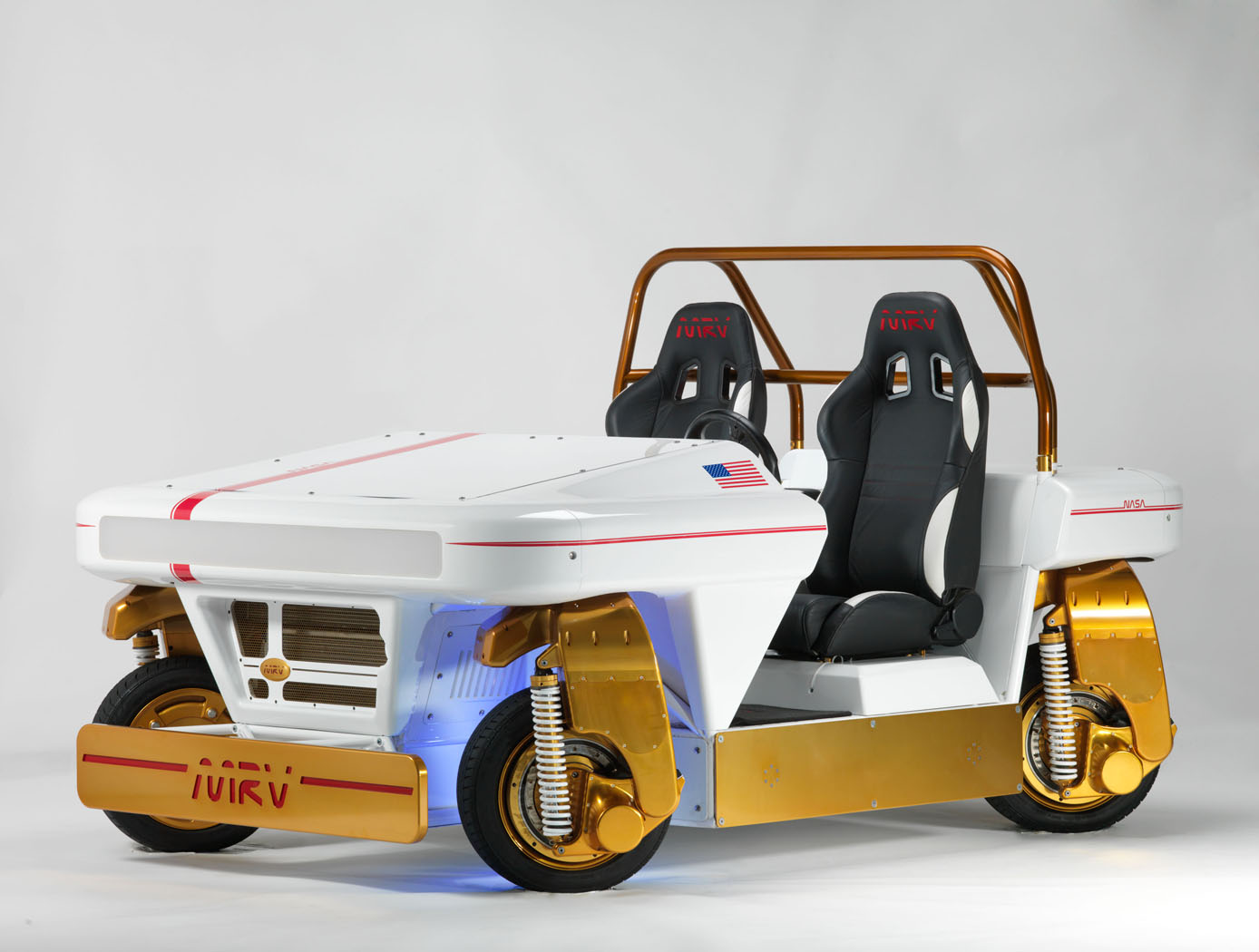
NASA’s superelastic tire is a viable alternative to the pneumatic tire. The tire shown here is all metal but could be encased in rubber for improved performance.

NASA researcher preps model wing for a blast from the "bug gun."

NASA's Modular Robotic Vehicle (MRV)
When the going gets too tough for traditional tires, this superelastic tire made for Mars’ rocky surface could be the answer
Inspired by the Apollo lunar tires, NASA’s superelastic tires forgoes the air-filled version for one made of shape memory alloys. These alloys are capable of carrying heavy loads across rough terrain. This tough tire not only has superior traction but is completely resistant to puncture damage. Because it doesn’t require air, it is impossible to run under-inflated, improving fuel efficiency and safety.
Bug splatter cleanup is a thing of the past thanks to this affordable coating
Hard-to-remove and unsightly, every vehicle owner has dealt with annoying bug splatter. But, did you know that dead bug residue can cause problems with aircraft and wind turbines? The buildup of bugs on these objects can cause significant aerodynamic issues. Luckily, the solution is inexpensive, easy to apply, and highly-effective. Enter NASA’s epoxy coating. This invention not only prevents bug splatter from sticking, but improves the overall efficiency of the vehicle or craft it is applied to thanks to its improved aerodynamic properties.
Get the most from electric vehicles with better battery health monitoring
As the industry continues to shift further away from fossil fuels to hybrid and electric vehicles, better battery health monitoring (BHM) is crucial. NASA has created a BHM technology that ensures optimal vehicle performance by accurately estimating the vehicle’s charge status, remaining battery life, and when the battery needs to be replaced entirely. This tech also protects the battery from dying sooner than designed by providing warnings when the vehicle is not being operated within its limits, such as speeding or traveling off-road.
Enhanced gear bearings can improve anything from motors to windshield wipers
Transmissions, electric windows, windshield wipers, engines and motors, control systems, and steering mechanisms—these are just some of the parts NASA’s gear bearings can improve on an automobile. By combining the gear and bearing functions into a single unit, NASA has created a technology that is truly a mechanical architecture breakthrough. The all-in-one design also reduces weight, size, and cost while increasing load capacity and performance.
Diagnose engine problems before they happen with this easy-to-install sensor
When developing a new sensor to monitor turbojet engines, NASA engineers quickly realized they just developed a game-changer. Compact, efficient, and strong—this easy-to-install pressure sensor can be applied directly on the engine for highly accurate, real-time data analysis. Previously, sensors that were applied directly to the engine were bulky and heavy to protect the system from high temperatures. NASA engineers were able to drop the bulk while improving the durability by enabling closed-loop control.
Battery-powered vehicle takes the stress out of parallel parking
With origins in lunar rover development, NASA’s modular robotic vehicle (MRV) is a fully electric car well-suited for busy cities, industrial complexes, or large resort areas.
Much like the human brain, MRV relies on the driver’s control inputs being converted to electrical signals. Those signals are then transmitted by wires to the motors within the vehicle to control propulsion, steering, and braking. The MRV is driven by four independent wheel modules, capable of rotating 180 degrees about its steering axis. This design makes parking a breeze! With MRV, drivers can parallel park by simply driving sideways into a tight spot.
Interested in licensing the tech mentioned above? Follow the links to apply through our website. You can also browse our entire technology portfolio here.
Follow the NASA Technology Transfer Program on twitter @NASAsolutions for the latest updates on technologies available for licensing.



